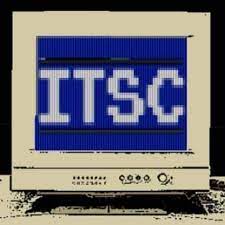Unified communications (UC) solutions are critical in many business environments, enabling better productivity, collaboration, and data management. In fact, by 2030, the market for UC collaboration tools is expected to reach a massive $222.61 billion.
However, as the UC landscape continues to evolve, driven by new communications preferences, technology (AI and automation), and working styles, managing a comprehensive UC ecosystem is becoming increasingly complex. Companies now need a way to monitor, examine, and evaluate multiple communication channels and environments.
At the same time, diminishing budgets and financial constraints means every organization needs to find ways of accomplishing more with less.
So, how can you manage UC environments more efficiently in 2024?
5 Ways to Improve UC Management
Rapid technological evolution in the UC landscape has led to a world where people can connect across a range of channels, with seamless convenience. However, heavy reliance on digital technologies has led to numerous challenges for IT teams. Here’s how companies can enhance UC Management, in the modern age.
1. Implement Comprehensive Observability Strategies
First, to manage UC environments efficiently, companies need to take a proactive and holistic approach to maintaining observability into the UC ecosystem, and tracking potential risks. With countless employees using different channels and devices, it can be difficult for IT teams to maintain a clear view of what’s happening throughout an organization.
In today’s landscape, companies need to implement a solution that delivers end-to-end observability across their technologies, offering real-time insights into the performance of different communication tools, usage metrics, and potential issues.
A comprehensive solution for system visibility and observability will give IT teams and business leaders powerful insights into the tools they should be installing, leveraging, and monitoring to boost employee productivity and efficiency. Plus, a holistic strategy for observability can help to reduce compliance issues and mitigate risks for growing teams.
2. Simplify Root Cause Analysis
Even the best communication and collaboration tools suffer from issues at times. For example, many IT teams struggle to troubleshoot problems effectively and efficiently, and find their underlying causes. In fact, the biggest challenge IT teams referenced in this study, was the amount of time they spend using multiple tools to troubleshoot issues.
Investing in comprehensive monitoring tools that facilitate the deep-rooted analysis of various problems in the communication ecosystem can address this problem. Giving employees the right resources to understand why problems occur, without the need to jump between various environments, saves time and eliminates common frustrations.
It can also be a valuable way for companies to find recurring issues, so they can implement proactive strategies to prevent them from happening in the future. A combined selection of tools for testing, quality assurance, and quality monitoring leads to improved employee productivity, reduced downtime, and fewer operational costs.
3. Automate End-to-end Monitoring
While certain issues with UC solutions do require expertise and creativity to fix, many methods for enhancing UC operations can be automated. According to IR’s report mentioned above, 25% of respondents said that they wasted over 8 hours each week managing common issues.
Automating end-to-end monitoring helps IT experts to regain more of their critical time in their day-to-day workflows. It can help to reduce the amount of time employees spend on reactive problem-solving, improving productivity and efficiency levels.
With automated solutions, companies can keep track of everything from voice quality issues, to problems with technical performance. More importantly, they can access notifications and alerts that allow them to resolve problems and mitigate issues in advance, reducing downtime and lost revenue.
4. Enable Cross-Functional Collaboration
In an increasingly complex communication environment, teams need to work cohesively together to eliminate and resolve common problems. IT teams play a crucial role in keeping every aspect of the enterprise landscape running smoothly. From managing cloud infrastructure, to monitoring performance, these teams help to prevent downtime and lost productivity.
Unfortunately, many IT experts and specialists working in different departments struggle to get the same consistent view of a company’s communication ecosystem. What’s worse, they can often have a hard time working cohesively with different teams to share insights and address issues.
Implementing an environment where teams can work effectively together on overcoming communication issues is crucial to making the most of your ecosystem. With the right monitoring solution, teams will be able to see multiple communication platforms, and track their performance in a single space, making it easier to collaborate on problem solving.
5. Take a Proactive Approach to Troubleshooting
Finally, optimizing your UC ecosystem, and making the management of your technology more efficient, requires a shift from a reactive, to a proactive mindset. Too many professionals waste unnecessary time simply “reacting” to problems, leading to unnecessary downtime, lost productivity, and poor user experiences.
Proactive troubleshooting solutions address these issues, by allowing companies to take a consistent approach to regularly upgrading their ecosystem, investing in the right technologies, and staying ahead of potential problems. A holistic platform for monitoring, testing, and troubleshooting, such as the solutions offered by IR, can lead to significant benefits.
These tools empower IT teams to proactively address problems before they happen, and ensure the wider organization can get the best possible experience, and return on investment from UC solutions.
Make UC Management More Efficient
Ultimately, to ensure they’re getting the most value out of their UC solutions, today’s business leaders need to empower IT teams to work cohesively on quality management, and provide the right tools to ensure their success. It’s not enough to simply take a reactive approach to addressing common problems.
Instead, business leaders need to ensure their teams can test and analyze communication channels, proactively troubleshoot issues, and automatically monitor potential risks. With a holistic approach that prioritizes proactivity, end-to-end visibility, and collaboration, companies can improve the value of their UC platforms, minimize costs, and even improve user and customer experiences.
This post originally appeared on Service Management - Enterprise - Channel News - UC Today.
